Hover over images for detail:
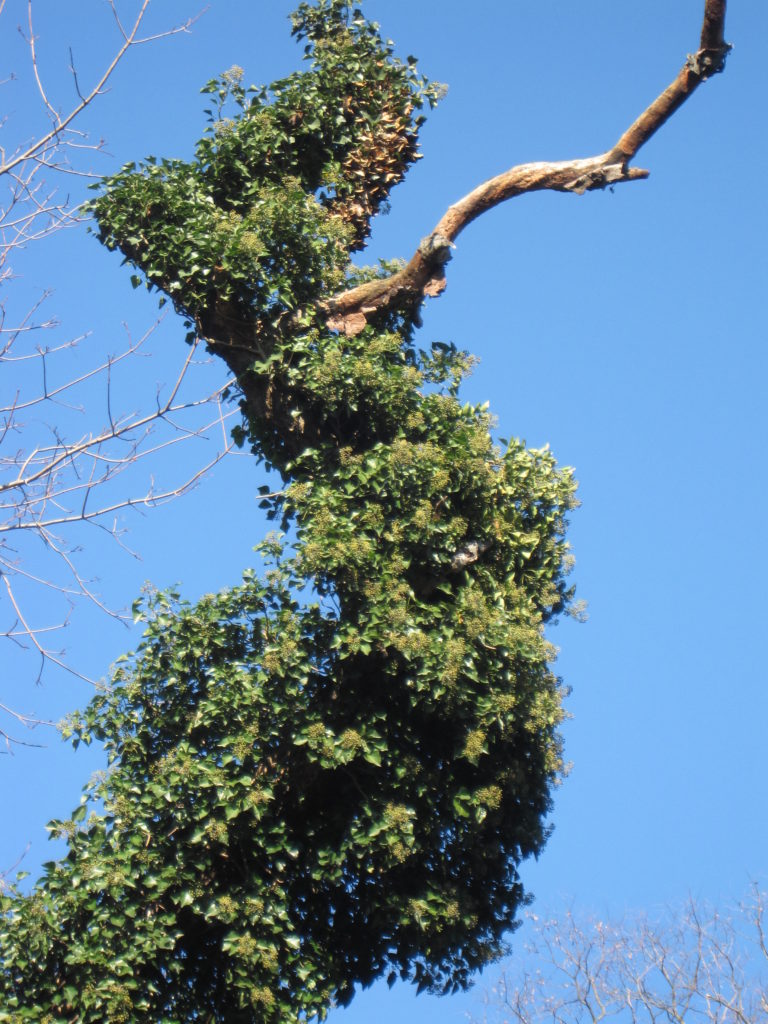
A tree engulfed in English Ivy will exhibit decline for several to many years before it dies. The reasons are that ivy obscures light from reaching the tree’s leaves, preventing photosynthesis, and the added weight of vines makes younger trees and branches susceptible to being blown down during storms. According to Penn State Extension, English Ivy has the ability to spread bacterial leaf scorch, which affects a wide variety of trees, and creates “ivy deserts” across landscapes.
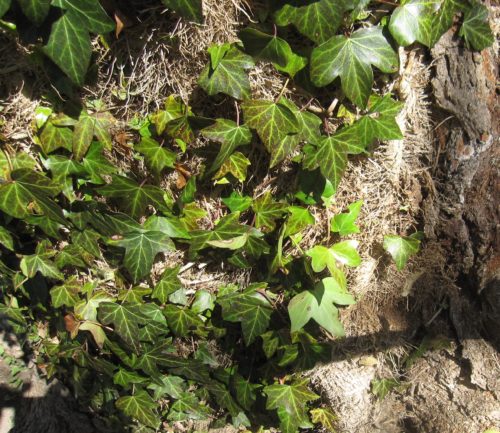
While English Ivy and similar species, such as Irish Ivy, are under control in their native European habitat, it has become invasive in North America. What’s more, their berries, which mature in the tree canopy by January, can be toxic to birds, other wildlife, and even humans. Children are especially susceptible to this plant’s toxins, and for some people, contact with its leaves causes skin irritation, itching, rash, and blisters.
Since poison ivy often grows along with English Ivy and both vines look alike — although poison ivy vines are leafless in the winter–– wear heavy gloves, glasses or goggles, long sleeves, and pants when removing ivy.
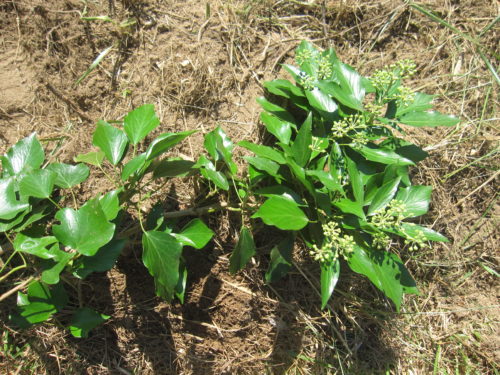
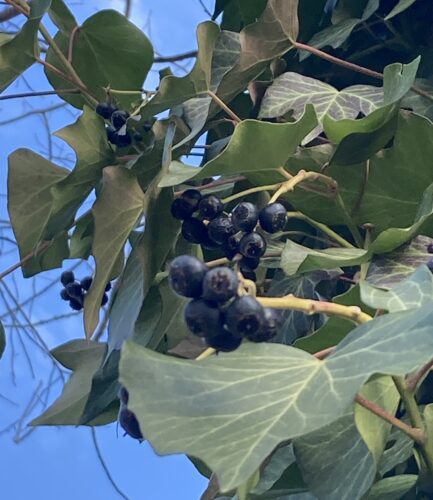
If possible, remove, collect, and trash ripe berries before birds can spread them.
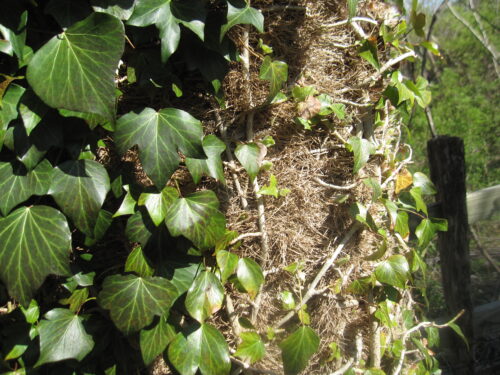
There’s a simple method to remove ivy permanently. Using 9” lineman’s or 10” groove joint pliers, pruners, and/or a limb saw for thicker vines, grab and cut the ivy on the tree at least a foot above the ground. Gently pull the lower section of each cut vine down to the ground — avoid damaging the bark– and pull it out to at least 3 feet from the trunk, cutting and uprooting any vines in the way. Cover the open area with leaves/wood chips, but leave 3” clear of mulch around the trunk. It may take a year for the remaining ivy to die on a healthy tree.
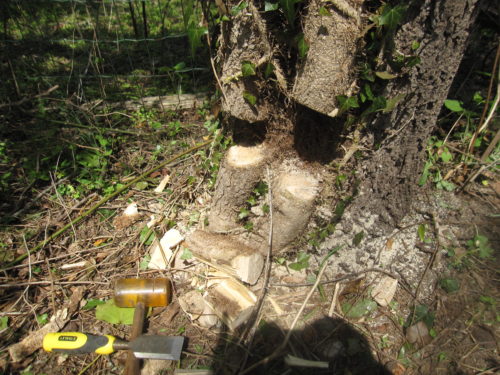 Large Mature Vines with Cut-outs
Large Mature Vines with Cut-outs
Often embedded in trees, mature English Ivy vines greater than an inch in diameter can be cut with a limb saw, along with a hammer and chisel. Specifically, at a foot or so in the tree above the ground, saw and chisel each large vine in two locations about five inches apart. Carefully remove the severed section without damaging the tree. If possible, remove the lower portion down to and along the ground. And since ivy tends to wrap around the foot of trees where it can damage their roots, saw the vines wherever possible to release tension. Check in a year for regrowth.
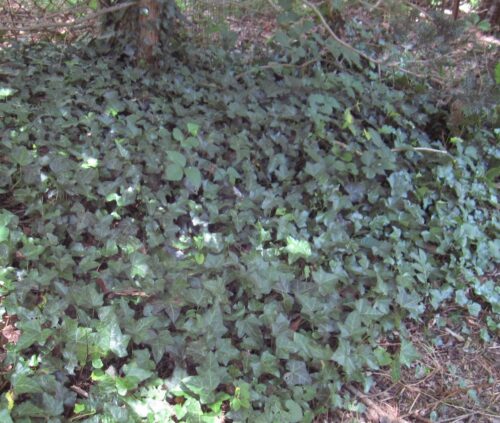
Runners cut by mowing can establish deep roots at the nodes, resulting in dense overall growth that requires additional root removal.
To remove patches of ivy running along the ground, start at the outer edge and, using pruners and pliers, grab, pull, and cut each runner as far as possible. Repeat to where the runner originates at the root. Extract the root, gather the runners, pile them on cardboard or plastic sheeting, and flip them occasionally to desiccate, or bag for a yard waste pickup.
The best time to remove ivy is in winter when other plants are dormant. The work is especially quick and effective when the ground is moist.
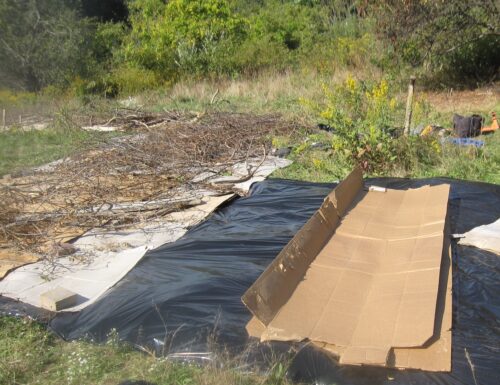
Another option for the English Ivy growing along the ground is to smother it by sheet mulching. Pull up as much ivy as possible, then lay corrugated cardboard or thick layers of newspaper plus layers of compost, straw, and wood chips to kill any remaining vines. The mulch should stay in place for at least two growing seasons and may need to be augmented several times. Black plastic sheeting secured with landscape staples is another option when laid at least 3 feet from trees, or where tree roots won’t be compromised. Pull vines from around the edge of the plastic.
(Click Vine Removal for additional details.)
